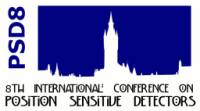Speaker
Dr
Bipin Singh
Description
Dedicated high-speed microCT systems are being developed for noninvasive screening of small animals. Such systems require scintillators with high spatial resolution, high light yield, and minimal persistence to ensure ghost free imaging. Unfortunately however, afterglow associated with the microcolumnar CsI:Tl scintillator screens used in current high speed systems introduce image lag, leading to substantial artifacts in reconstructed images, especially when the detector is operated at several hundreds of frames per second. At RMD, we have discovered that the addition of a second dopant, Eu2+, to the CsI:Tl crystals, suppress the afterglow by as much as a factor of 20 at 2 ms after a short excitation pulse of 20 ns, and by as much as a factor of 15 at 2 ms after a long excitation pulse of 100 ms. Our observations, supported by theoretical modeling, indicate that Eu2+ ions introduce deep electron traps that alter the decay kinetics of the material, making it suitable for many high-speed imaging applications. Here we report on the fabrication and characterization of microcolumnar CsI:Tl,Eu films to examine if the afterglow properties of CsI:Tl,Eu crystals are preserved in the films as well. Preliminary results indicate that the co-doped microcolumnar films show a factor of 3 improvement in the afterglow compared to the standard CsI:Tl films. The effects of the codopant on the performance of the newly fabricated microcolumnar films, and their suitability for high-speed microCT will be discussed in the paper.
Author
Dr
Bipin Singh

